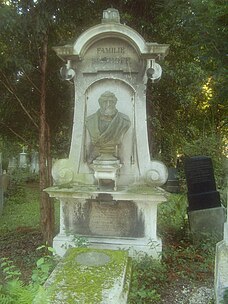
Theodor Ludwig Wilhelm von Bischoff (28 October 1807 in Hannover – 5 December 1882 in Munich) was a German physician and biologist.

Theodor Ludwig Wilhelm von Bischoff (28 October 1807 in Hannover – 5 December 1882 in Munich) was a German physician and biologist.
He lectured on pathological anatomy at Heidelberg (1835-1843) and held professorships in anatomy and physiology at Giessen (1843-1855) and Munich, where he was appointed to the chair of anatomy and physiology in 1854.[1] In 1843, Theodor von Bischoff was elected as member of the German Academy of Sciences.[2]
His most important contributions were made in embryology with a series of four exhaustive memoirs on the development of the mammalian ovum; published in 1842 (rabbit), 1845 (dog), 1852 (guinea pig), and 1854 (roe deer).[3] His studies concerning animal metabolism by measuring urea were less successful, as was his research on the anatomy of skull and brain.
He was elected a foreign member of the Royal Netherlands Academy of Arts and Sciences in 1878.[4]
